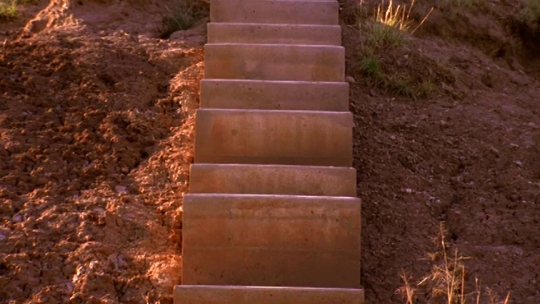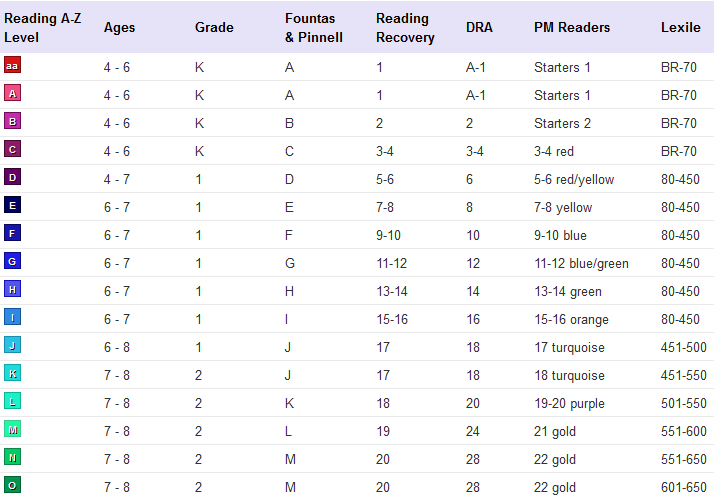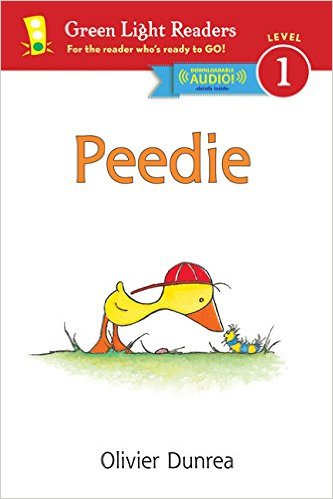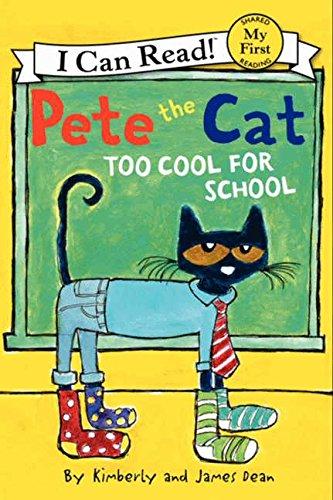A bookseller first wandering into what a reading specialist described to me recently as the dark underworld of early leveled readers is bound to feel that he or she has wandered into the wrong trade show. Upon closer inspection, however, it becomes apparent that it is not so much the wrong trade show but rather that one’s trade publisher colleagues, who ought to be there, are not.
 The Reading Recovery program, which is the core in school resource for struggling emergent readers, is a 20-step stairway constructed for the roughly 15% of lower elementary schools students who are struggling to read. The stairway exits into the multidimensional world of written words, that marvelous place which average and proficient readers reach by walking or running up an adjacent slope.
The Reading Recovery program, which is the core in school resource for struggling emergent readers, is a 20-step stairway constructed for the roughly 15% of lower elementary schools students who are struggling to read. The stairway exits into the multidimensional world of written words, that marvelous place which average and proficient readers reach by walking or running up an adjacent slope.
The building materials of the stairway are found in the Reading Recovery Book List of leveled readers, ranging from level 1-20. Though Reading Recovery levels have rough equivalents in other leveling systems, each book on the Reading Recovery Book List is independently leveled by a fleet of volunteer specialists. This leveling is even subject to change for the same book over time and publishers are not allowed to list Reading Recovery levels on their books for that reason.
As you can see from this Reading A-Z leveling equivalency chart, the Reading Recovery Book list covers only the area represented by Fountas Pinnell A-M. You can click on the image to see the full leveling equivalency chart.

The list is produced every 18 months or so and is heavily populated with books from educational specialty publishers such as Pioneer Valley, EPS, Reading Reading Books, and Rigby. A look at the Reading Recovery Suppliers Guide, indicates that these specialty vendors support the program directly as associate members.
 Trade publishers have only a small presence on the list and, notably, are largely represented by older titles. One person at a specialty publisher told me that some years ago there had been a push to consider books from the major houses; however, trade publishers were considered to have slapped levels on their books without precision and had gotten a bad reputation among the leveling segment of the reading specialist population. The titles on the list would bear that out.
Trade publishers have only a small presence on the list and, notably, are largely represented by older titles. One person at a specialty publisher told me that some years ago there had been a push to consider books from the major houses; however, trade publishers were considered to have slapped levels on their books without precision and had gotten a bad reputation among the leveling segment of the reading specialist population. The titles on the list would bear that out.
In recent years, however, Penguin Young Readers, Random House Step into Reading Books, Harper I Can Read titles, and Houghton Mifflin Green Light titles have all been F&P leveled with real care. Let’s look now at the Reading Recovery leveling criteria.
Each book that was reviewed for possible inclusion was evaluated to see how well the book:
• supported strategic development;
• had text features that worked together appropriately for a particular level rather than creating
undue challenges to the readers because of widely disparate features of text difficulty (language,
concepts, spatial features, etc.);
• had a sufficient amount of text on which a child could engage in problem solving and practice
fluent reading;
• represented ethnic, cultural, and language diversity in a way that valued all persons;
• had a story line that was of interest to children;
• had good-quality illustrations; and
• was constructed using good-quality materials.
As a rule of thumb trade books, which are largely leveled after the fact, tend to be weaker at the first two categories but excel at the others. Educational specialty titles are weakest at providing interest, narrative focus, and quality illustrations and production. They are like classroom materials written to the test; in this case, they were books written to the leveling standards. One reading specialist mentioned to me that many of them met text standards but were in effect a series of sounds without any real narrative meaning.
 Issues of strategic development and textual consistency are very important, but the role of interest, dynamic interest (think an F&P Level E Pete The Cat book), along with illustration quality, are vitally important too. Furthermore trade publishers have been bearing textual matters more in mind in the last five years.
Issues of strategic development and textual consistency are very important, but the role of interest, dynamic interest (think an F&P Level E Pete The Cat book), along with illustration quality, are vitally important too. Furthermore trade publishers have been bearing textual matters more in mind in the last five years.
The use of the Reading Recovery Book List presents a host of problems for bookstores that work closely with schools. First of all, many Reading Recovery grants can only be filled with books on the list. Many of the educational specialty publishers offer no discount terms to bookstores at all. Some offer 20% plus freight, barely enough to sell the books for a purchase order at list. Those with no terms force the store to mark up over list, something I, and I’m sure we all, loathe doing. Furthermore, filling these orders, usually involving materials not in our industry or store databases, is labor-intensive and intrinsically unprofitable.
There are two potential action items here for trade publishers. First, they have wonderful books, and have invested in leveling them. They need to do everything possible to insure that these high interest books are included in the Reading Recovery leveling process. Of course book don’t need to be leveled prior to being considered for inclusion by a Reading Recovery specialist. However, prior leveling makes it simple to select books for potential inclusion.
The second issue is more complicated. It is the paucity of trade books that would be Reading Recovery leveled 1-6 (roughly F&P levels A-D). There are actually only a handful of them in existence. For example there are 650 Harper I Can read titles F&P leveled from A-M but only five of those are A-D! These low level books are the first steps on the Reading Recovery stairway, a place that everyone hopes children stay on for as brief a period of time as possible. The narrow, ephemeral, and specialized nature of these low level books is presumably the prime reason they have not been produced. Nonetheless, I would argue that it bears thinking about.
I am not the only one who can tell you that the appetite for our reading specialist educational partners for these low level books is enormous, and the lack of them a major problem. As Jesica Sweedler DeHart of Book People of Moscow, Idaho, aptly put it, “The frustration is huge.” At present the trade publishers have produced a Reading Recovery stairway that is missing the first six steps. If the Reading Recovery market is valuable, which it certainly is, then it it would be valuable to build the whole stairway, bottom to top. The stairway leads, after all, up to the wider world of engaged reading which is the trade book universe.
 Is the market big enough to justify the expense? That’s a toughie. The educational specialty publishers seem to think so. They have constructed a firewall of sole source provider agreements, poor terms in general, and association outreach to protect it.
Is the market big enough to justify the expense? That’s a toughie. The educational specialty publishers seem to think so. They have constructed a firewall of sole source provider agreements, poor terms in general, and association outreach to protect it.
The importance of producing dynamically engaged readers cannot be overstated, whether thinking as booksellers, publishers, parents or educators. Sure, leveling is only a tool, and interest is a paramount factor, but nothing is better calculated to get struggling emergent readers into the game than a set of Pete the Cat books leveled 1-20 in the hands of a reading specialist by day and parents by night.

Thank you, Kenny! The leveled reading arena has been fraught with confusion and frustration. Your post has not only helped clarify the various leveling platforms (so I at least appear to know what I’m talking about with customers) but also unveils a great opportunity for us all. Publishers? If you build them, we will sell.
Bookstores are not the only potential source of sales. In our library system, we are working closely with the local school system to help all students pass the 3rd grade reading test. We offer an after school Reading Buddies program, and we are desperately in need of Levels A and B (F&P) titles to use with young children. If we can find more titles at this lower level (without turning to expensive curriculum sets, which we have done to some extent) we would be thrilled.
Thanks, Kenny, for gathering up the data and creating a lucid presentation. Major publishers pour considerable resources into their early reader programs. Reading Recovery clearly takes its mission very seriously. Maybe this blog post will unclog the pipeline between the two.
And sometimes there are terrific series at very basic levels (examples: Real Kids Readers, many of them by Marcia Leonard, from Millbrook Press [Lerner]; the Now I’m Reading! series by Nora Gaydos) that don’t get the attention that would bring them into Reading Recovery use. Erratic availability, slow-growing series, and sometimes above-average prices and terms filter out excellent candidates for supporting the weaker early steps.
I agree with the earlier librarian. My large urban library system is always looking out for more super basic, step one A-D level readers!
The lowest leveled Reading Recovery market is particularly specialized. Assuming that you want to reach average and proficient readers, which would place your books F&P E and above, my two cents would be to make the very best books you can and have a reading specialist who has an appreciation for the power of interest provide input int he editorial process, as well as the post facto leveling.